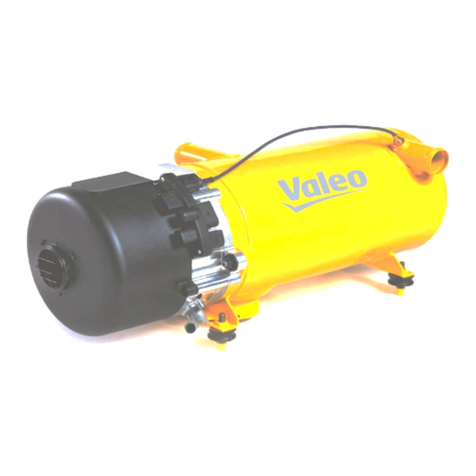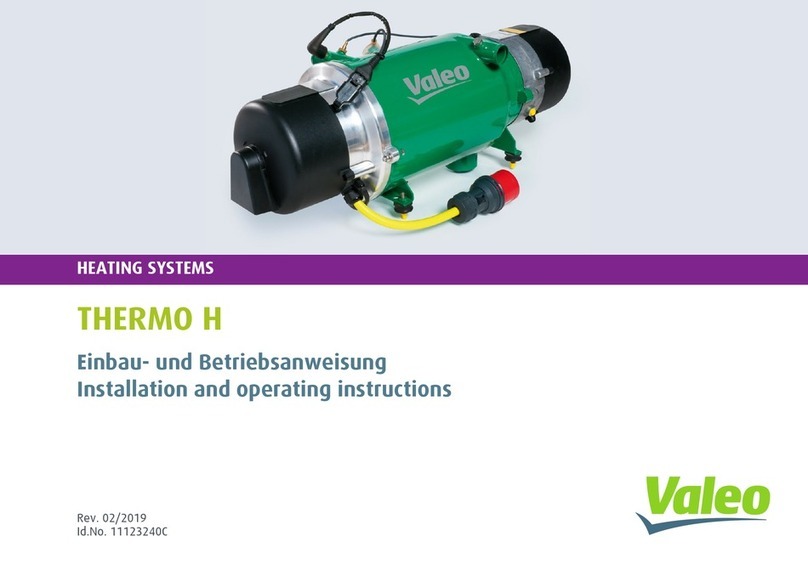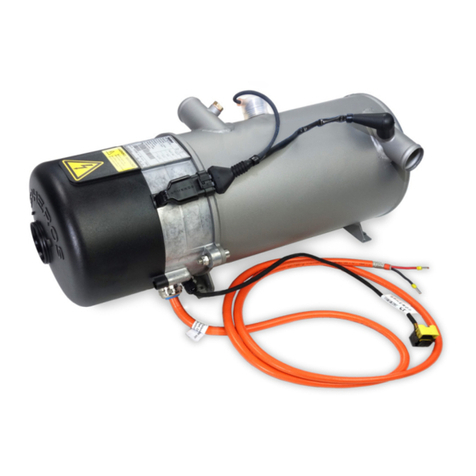
101
Thermo H 1 Introduction
1Introduction
1.1 Content and purpose
This workshop manual is used during maintenance and
repair of water heaters (further referred to as heaters)
Thermo H.
Electrical work may only be performed by persons,
which have the required qualification (see 1.6.1).
ATTENTION:
Work on the heater may only be performed by briefed
and/or trained by Valeo personnel.
1.2 Effectivity of the workshop manual
The workshop manual applies to heaters listed on the title
page of this document.
It may be subjected to modifications and amendments.
The respectively currently effectife version is binding. This
version can be found on the Valeo homepage under
www.valeo-thermalbus.com/eu_en/Service/Downloads/
Heating-systems/Thermo-H.
1.3 Meaning of highlighted content
Throughout this manual the emphasized words Warning!,
Caution!, ATTENTION: and NOTE: used as follows:
This caption is used to indicate possible severe inju-
ries or fatal accidents if instructions or procedures
are carried out incorrectly or entirely disregarded.
This caption is used to indicate possible minor inju-
ries if instructions or procedures are carried out
incorrectly or entirely disregarded.
ATTENTION:
This caption points to actions which may cause ma-
terial damage.
NOTE:
This caption is used to draw attention to an important
feature.
1.4 Symbols
1.5 Further documentation to be used
The use of additional service literature is required.
References are provided in the workshop manual at
appropriate locations.
Use the following documents during operation and main-
tenance of the heaters:
• Installation and operating instructions
• Spare parts list
• Technical Information (TI)
• Workshop Manual Thermo S
This service literature is also available at www.valeo-ther-
malbus.com/eu_en/Service/Downloads/Heating-systems
for download.
1.6 Safety information and regulations
Basically, general accident pevention provisions and the
valid industrial safety directions must be adhered to.
"General Safety Regulations" which exceed the frame-
work of these provisions are listed below.
The specific safety regulations which affect the present
manual are issued highlighted in the individual sections or
procedures.
Danger to life and health!
Warning!
Danger to life and health!
Warning!
Hazardous to health!
Caution!
Symbol tightening torque value:
Identifies in graphics parts (eg nuts, bolts)
that are to be mounted with a specific tigh-
tening torque. The torque values are
shown at the symbol and are binding.
Orientation help - next wor-
king step (s) on the HV
control head.
Orientation help - next wor-
king step (s) on the heat
exchanger.
Orientation help - next wor-
king step (s) on the Diesel
burner head.




































